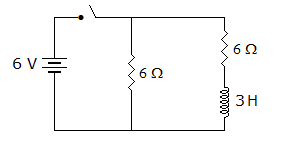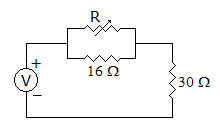Electronics and Communication Engineering - Networks Analysis and Synthesis
Exercise : Networks Analysis and Synthesis - Section 6
- Networks Analysis and Synthesis - Section 14
- Networks Analysis and Synthesis - Section 27
- Networks Analysis and Synthesis - Section 26
- Networks Analysis and Synthesis - Section 25
- Networks Analysis and Synthesis - Section 24
- Networks Analysis and Synthesis - Section 23
- Networks Analysis and Synthesis - Section 22
- Networks Analysis and Synthesis - Section 21
- Networks Analysis and Synthesis - Section 20
- Networks Analysis and Synthesis - Section 19
- Networks Analysis and Synthesis - Section 18
- Networks Analysis and Synthesis - Section 17
- Networks Analysis and Synthesis - Section 16
- Networks Analysis and Synthesis - Section 15
- Networks Analysis and Synthesis - Section 1
- Networks Analysis and Synthesis - Section 13
- Networks Analysis and Synthesis - Section 12
- Networks Analysis and Synthesis - Section 11
- Networks Analysis and Synthesis - Section 10
- Networks Analysis and Synthesis - Section 9
- Networks Analysis and Synthesis - Section 8
- Networks Analysis and Synthesis - Section 7
- Networks Analysis and Synthesis - Section 6
- Networks Analysis and Synthesis - Section 5
- Networks Analysis and Synthesis - Section 4
- Networks Analysis and Synthesis - Section 3
- Networks Analysis and Synthesis - Section 2
21.
Three resistances of 15 Ω, 10 Ω and 3 Ω are connected in parallel. The overall resistance is
Answer: Option
Explanation:
For resistances is parallel, overall resistance is less than the smallest resistance.
22.
In figure, the switch is closed at t = 0. At t = 0+ The value of current supplied by battery is


Answer: Option
Explanation:
At t = 0, current in R-L branch is zero.
23.
In the circuit shown in the figure the power dissipated in 30 Ω resistor will be maximum if the value of R is


Answer: Option
Explanation:
If R = 0, it will be act a short circuit, 16 Ω Resistor will not play any role, only power dissipated in 30 Ω resistor.
But it R = 0, then power dissipated in 16 Ω resistor also.
24.
Which of the following polynomials is not Hurwitz?
Answer: Option
Explanation:
One coefficient is negative. Hence not Hurwitz.
25.
In an RLC underdamped circuit
Answer: Option
Explanation:


Quick links
Quantitative Aptitude
Verbal (English)
Reasoning
Programming
Interview
Placement Papers



